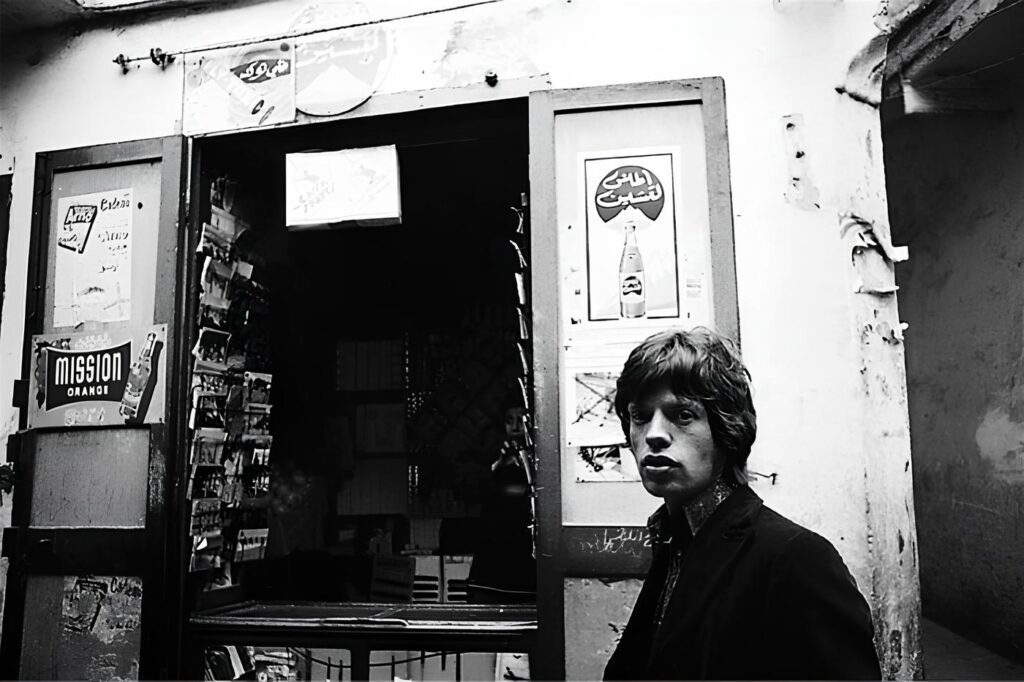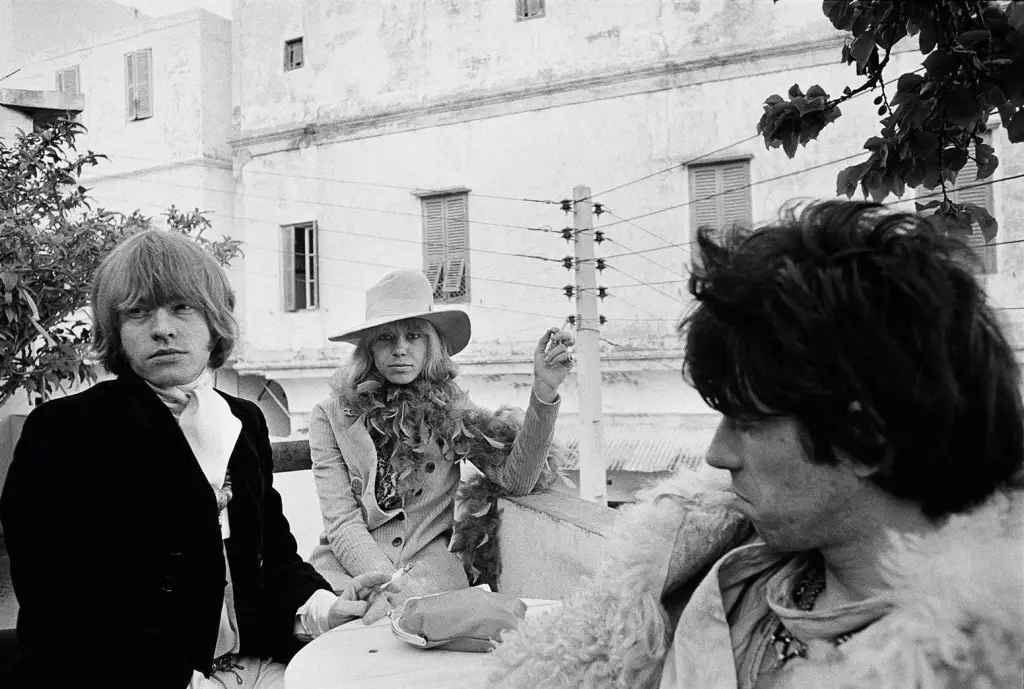
Print details
- Photographer: Michael Cooper (UK, 1941-1973)
- Purchased on: 07/23/2023
- Edition: 1/25 from Micheal Cooper Collection
- Size: 33×49 cm
Backstory
In February 1967, the Rolling Stones decided to leave London for Morocco while awaiting a verdict on drug charges against them, following a party incident at Keith Richards’ house.
February 11-12, 1967: Keith Richards holds a weekend party at his home Redlands, with Mick Jagger and Marianne Faithfull, George and Patti Harrison, art deal Robert Fraser and others. Tipped by the News of the World, the police arrive on the premises (when the Harrisons are gone) and conduct a search for drugs. The police confiscate pills from Mick Jagger’s coat, heroin belonging to Robert Fraser and cannabis resin. [source]
However, if they hoped to escape their problems by leaving, they instead encountered issues that would forever change their story. According A Continuous Lean, which wrote a fantastic article about this trip, “the original plan had been for Jones, and Richards to be driven through France and Spain to meet up with Jagger in Morocco, but once Jones became sick he was forced to be hospitalized in Toulouse, France. Pallenberg and Richards forged ahead though, and with Jones temporarily out of the picture the two fell right into each others arms, starting a relationship that would last for the next twelve years.”

The situation sparked tension within the Rolling Stones and ultimately led to Brian Jones, the band’s original leader and the one who named the group, being replaced by Mick Taylor in June 1969. Mick Taylor was later replaced by Ronnie Wood, who is currently a member of the band. Tragically, Brian Jones drowned a month later, under the influence of drugs and alcohol.
After Mick Jagger and Keith Richards were formally charged (May 10, 1967) with drug possession (Mick) and allowing premises to be used for cannabis use, respectively, Keith’s conviction was overturned, while Mick’s conviction was upheld, though his sentence was quashed (July 31, 1967). [source]
In an interview in 2017 about the bust, Mick Jagger said “The Stones were good targets. We made good copy. It was the idea of degenerative moral standards. They were looking for scapegoats for some sort of generational lifestyle.”
About the photographer
Born in 1941, Michael Cooper became particularly close with The Rolling Stones and The Beatles, for whom his most famous works were produced (the staging of the Beatles’ Sgt. Pepper ́s Lonely Hearts Club Band album cover was set up in his studio). An intimate of The Rolling Stones during the band’s earliest years, Michael Cooper chronicled the group’s rise from the blues clubs of London to international stardom. Referred to as the band’s “court photographer” from 1963 until his untimely death in 1973, Cooper at one point lived with Keith Richards and Anita Pallenberg, cultivating the sort of comradeship that allowed him to capture some of the most unguarded and honest images taken of the Stones during their first decade. Very few, if any photographs had been printed in a commercial fomat by that time. [source]
The collection
In 2023, I began collecting photographs (primarily) that have a story to tell. The enthusiasm from the few people I shared the idea with encouraged me to make these stories public. I have therefore decided to also publish these “stories” on my website, so that they are not exclusively accessible via the QR code I offer to my guests.

Leave a Reply